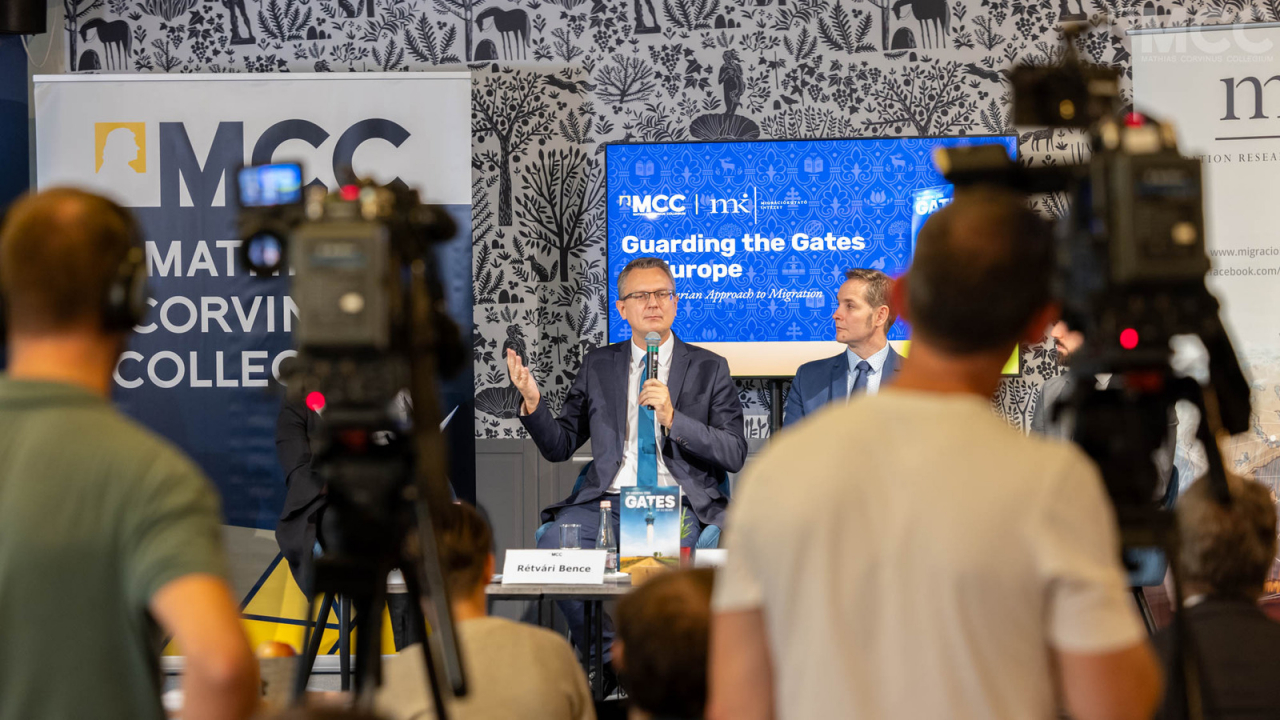Reading time: 4 minutes
Bence Rétvári has called the EU's procedures against Hungary on migration policy "unfair". The Deputy Minister and Parliamentary State Secretary of the Ministry of the Interior was speaking at the book launch of the MCC Migration Research Institute - Guarding the Gates of Europe - The Hungarian Approach to Migration is the first English-language publication to present Hungarian migration policy in a comprehensive manner. The discussion also touched on issues such as the EU's migration pact, which the politician said was an invitation letter to migrants.
After almost ten years, there is still no solution at EU level to curb illegal immigration: hundreds of thousands of people enter Europe uncontrolled every year, border fences are being erected by frontline countries like Hungary, and anti-migration voices are getting louder in previously pro-immigration countries. However, the Hungarian government's position on the issue has remained unchanged since 2015: "we will defend the laws and protect the southern border", said Bence Rétvári, Deputy Minister of State and Parliamentary State Secretary of the Ministry of the Interior, at the book launch of the MCC Migration Research Institute (MKI) on Wednesday.
The institute published its latest English-language volume, Guarding the Gates of Europe - The Hungarian Approach to Migration, in response to accusations in Western Europe that Hungary's migration policy is "anti-immigration", "anti-foreigner" and "inhumane". The book contains a wealth of photographs illustrating the migration situation, including some showing armed migrants and others showing armed migrants.
Although the book looks back to the time of the conquest to describe migration trends, the focus is on the migration crisis of 2015 and its consequences and responses. Hungary's fence-building project was criticised at the time, but recent years have shown that the solution is not for EU Member States to take in all arriving third-country nationals. The European Pact on Migration promotes migration and contains measures that not all Member States agree with, such as the distribution of migrants according to a quota system. The example of our country has shown that if a Member State does not agree with a common EU policy, there will be consequences. Bence Rétvári said it was outrageous that the Court of Justice of the European Union had fined Hungary €200 million (HUF 800 billion) for not implementing the measures.
- The fine is unfair, because we have to pay for defending ourselves, while they should pay for defending the European Union," he said. In his speech, he also described the methods used by migrants to enter the EU. One of the most common is to hide in border areas until sunset and then cut through the fence. By the time the border guards arrive, they have retreated to their hiding places and sneak across the border a few hours later, taking advantage of the hours it takes to repair the fence. He also spoke about how traffickers are paid: they typically pay in instalments once they have reached their destination. He added that this is why migrants usually arrive without passports but with mobile phones. Bence Rétvári said that gangs often kidnap each other's migrants and then hold them for ransom, proving that if they are chosen, they will reach their destination safely.
The EU's migration pact is hardly a solution to illegal immigration, said Viktor Marsai, director of the Migration Research Institute, adding that the new pact requires applications to be processed at the border and calls for the establishment of an institutional system eerily similar to transit zones. He pointed out that Hungary would have to set up an institution capable of accommodating eight thousand people, which in practice means that Hungary would have to process 32 thousand applications a year - given that the maximum time for processing is three months. He also pointed out that there is no uniform assessment of the construction of fences to detain illegal immigrants. While the Hungarian construction works have been heavily criticised, the Spanish, Polish and Finnish border fences have received far less criticism. On the latter, the expert said "there are good fences".
During the panel discussion, the Western Balkan migration route, which includes Hungary, was discussed, as it came to the fore after it emerged that the southern corridor was the route used by the participants in the Paris terrorist attacks of 13 November 2015 to enter France. Migration has thus become a major security threat for Europe. In recent years, however, Hungarian-Serbian cooperation has succeeded in reducing illegal traffic between the two countries. Sayfo Omar, head of research at the MKI, said that this year the number of border crossers has already fallen by 74 percent compared to last year. However, he also warned that the reasons for the motivation to migrate remain and that migration pressure could increase in the coming period. He also underlined that there has been a sharp shift in migration policy in Western European countries, with an increasing number of governments starting to outsource asylum procedures to non-EU countries. Italy, for example, has an agreement with Albania, but the situation is far from easy with countries such as Syria or Taliban-led Afghanistan, which remain the main sending countries, as was the case ten years ago.
By Edith Krisztina Dócza, Senior Analyst at the Migration Research Institute





